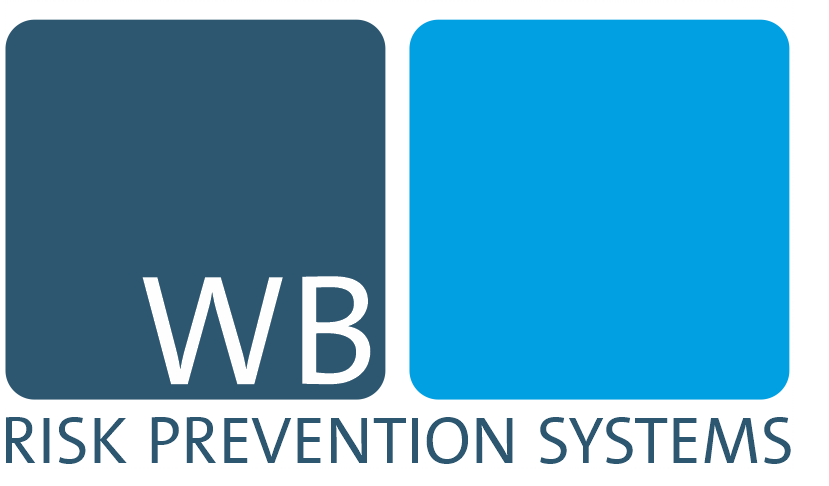Sexuelle Belästigung am Arbeitsplatz
Der Frühling und Sommer 2022 hat viele von uns die Möglichkeit gebracht, wieder physisch mehr Zeit in unseren Unternehmen zu verbringen. Und sei es nur teilweise, weil sich Zeit- und Arbeitsmodelle nachhaltig verändert haben und Homeoffice-Möglichkeiten weiter beibehalten werden. Aber zumindest Teammeetings, Mitarbeiter:innen-Events, Schulungen, Treffen mit Kolleg:innen usw. können wieder in Präsenz stattfinden. Das erzeugt Euphorie: Nach zwei Jahren weitestgehender Isolation können wir uns endlich wieder sehen, treffen und engere Kontakte knüpfen, als es digitale Formate ermöglichen. Betriebsfeiern, Partys mit Kolleg:innen und das gemeinsame Mittagessen werden nun nachgeholt.
Aber auch das Verhalten der Menschen hat sich durch die Pandemie und die Einschränkungen verändert. Ein Großteil der Bevölkerung war gezwungen, über einen langen Zeitraum in einem eingeschränkten Raum und mit limitierten, persönlichen bzw. sozialen Kontakten durchzustehen. Machten sich viele Arbeitgeber:innen anfänglich vor allem um Familien wegen der Doppelbelastung Homeoffice und Homeschooling Sorgen, berichten uns die Firmen nun, dass es vor allem jüngere alleinstehende Kolleg:innen sind, die (ohne Partnerschaft / Familien) regelrecht “vereinsamten” und bei denen die letzten Jahre deutliche mentale Spuren hinterlassen haben.
Eine veränderte Gesellschaft
Wir haben bereits vor einigen Wochen davon berichtet, dass als eine mögliche Folge der Pandemie die Gewaltbereitschaft bei einigen Menschen gestiegen ist. Gemeinsam mit dem VfL Bochum hatten wir dazu Daten und Fakten weltweit gesammelt, analysiert und eine Prognose erstellt. Von ähnlichen Entwicklungen bei Veranstaltungen wie dem Formel 1 Event in Zandvoort am vergangenen Wochenende, berichtet aktuell die niederländische Presse.
Ganz aktuell wird uns darüber hinaus von verschiedenen Unternehmen unterschiedlicher Größe und Branche eine weitere Entwicklung genannt, die uns so relevant erscheint, dass wir sie heute hier mit Ihnen teilen wollen: Es kommt gehäuft zu einem übergriffigen Verhalten gegenüber Kolleg:innen.
Grenzen, die noch vor wenigen Jahren weitestgehend akzeptiert schienen, werden von einigen Kolleg:innen nun teils deutlich überschritten. So werden uns zurzeit an unsere anonyme Whistleblower- & Sorgen-Telefonnummer +49 234 9041836-60 und E-Mail-Adresse [email protected] vermehrt Belästigungen innerhalb von Belegschaften sowohl in verbaler als auch körperlicher Form berichtet. Das fängt bei anzüglichen Bemerkungen und „Witzen“ sowie aufdringlichen oder ein- bzw. zweideutigen Kommentaren an und geht hin bis zum unerwünschten Anfassen und Berührungen sensibler Körperstellen bzw. offenen Versuchen sexueller Handlungen. Allen ist gemeinsam: Von den Betroffenen unerwünscht, als erniedrigend wahrgenommen und als einseitige Grenzüberschreitung empfunden. Eine Zusammenstellung, was unter sexueller Belästigung zu verstehen ist und wo die Grenze zwischen „Flirt“ und Belästigung liegen, hat die Antidiskriminierungsstelle des Bundes in einer Broschüre zusammengestellt.
Zudem haben sich mehrere Unternehmen an uns gewandt, die ähnliche Entwicklungen in ihrer Mitarbeiterschaft wahrnehmen und uns um Unterstützung bei dem Aufbau von Präventionsmaßnahmen bitten.
Risiken auf allen Ebenen richtig wahrnehmen
Dabei handelt es sich oft um Vorfälle, die als der berühmte „Schritt zu weit“ kategorisiert werden können und – für die Betroffenen sehr problematisch – nicht als solches von Kolleg:innen, aber auch Vertrauenspersonen wahrgenommen werden. Die meldenden Personen haben häufig das Gefühl, nicht ernst genommen zu werden oder mit den klassischen Ausreden vertröstet zu werden („war doch nur ein Witz“, „ist doch nur die Freude, weil wir uns zwei Jahre lang nicht gesehen haben”). Auch Kolleg:innen, an die man sich vertrauensvoll wendet, reagieren anscheinend oft nicht mit der gebotenen Empathie („ach, er/sie ist doch nur übereuphorisch wieder hier zu sein“, „das meint er/sie nicht persönlich, er/sie hat halt Nachholbedarf, er/sie macht das auch bei anderen“). Die Betroffenen haben also häufig das Gefühl, dass sexuelle Belästigung von den Kolleg:innen als Flirtversuch verharmlost wird oder es kommt zur klassischen Schuldumkehr („da hast Du was missverstanden“, „dann lächle ihn/sie doch nicht so häufig an“).
Betroffene berichten, sich nicht an jemanden im Unternehmen direkt wenden zu wollen, u.a. da interne Ansprechstellen als nicht weit weg genug von den Kollegen angesehen werden. Ebenso sammeln einige Betroffene die Erfahrung, dass Informationen nicht vertraulich behandelt werden und den Weg in den Flurfunk des Unternehmens finden. Betroffene berichten auch, dass aus Angst vor Tratsch und Reputationsschäden Übergriffe verschwiegen oder im schlimmsten Fall ertragen werden.
Mit anderen Worten: Der Euphorie der Belegschaft, nach einer langen Zeit in die soziale Struktur des Unternehmens physisch zurückkehren zu können und „locker, leicht und befreit von Isolation“ mit Kolleg:innen Spaß haben und rumalbern zu dürfen, scheint die Gefahr gegenüberzustehen, dass wichtige (verbale wie körperliche) Abstände und Anstandsregeln nicht mehr eingehalten werden.
Schäden nicht nur für Betroffene, sondern auch für Unternehmen
Betroffene berichten uns von dem Eindruck, dass Kolleg:innen u.a. durch die Isolation in den letzten beiden Jahren einen angemessenen Umgang verlernt haben und nun wieder neu sensibilisiert werden müssen.
Solche (kollektiven) Veränderungen und gesellschaftlichen Trends, die beispielsweise als Folge extremer Einflüsse wie einer Pandemie und dem fehlenden sozialen Umgang mit anderen Menschen ausgelöst werden können, müssen daher stärker in die Wahrnehmung des Risikomanagements rücken – auch und insbesondere in Unternehmen. Die Folgen solcher Missstände beschränken sich nämlich nicht nur auf die persönliche Ebene der Betroffenen (Ärger, Verlegenheit, Angst, Ohnmachts- oder Minderwertigkeitsgefühl, Misstrauen, Depression, Arbeitsunfähigkeit etc.), sondern bergen ebenso Risiken für die Unternehmen selbst:
- Ausfälle der Mitarbeiter:innen
- Verlust von Arbeitskräften
- Unruhe, Misstrauen und Vertrauensverlust innerhalb der Belegschaft und von Belegschaft zu Management
- Negative Auswirkungen auf das Betriebsklima
- Rufschädigung / Reputationsverlust im Markt
- Mögliche Schadensersatzforderungen gegen das Unternehmen
- Arbeits- und strafrechtliche Konsequenzen für Täter:innen und Management
Demgegenüber spielen adäquate Präventionsmaßnahmen und ein verantwortungsvoller Umgang mit sexueller Belästigung am Arbeitsplatz eine wichtige Rolle für die Atmosphäre im Unternehmen und die Positionierung des Unternehmens als vorbildhafte/r Arbeitgeber:in.
Was können und sollten Unternehmen konkret tun bei sexuell übergriffigem Verhalten verbaler oder tätlicher Art, wenn sie solch ein Verhalten in ihrer Belegschaft vermuten oder gar feststellen?
In vielen Unternehmen sind zwar bereits Stellen, wie z.B. Vertrauenspersonen oder Beschwerdestellen, eingerichtet. Diese Funktionen eignen sich auch, um Konflikte zwischen unterschiedlichen Hierarchien, zwischen Arbeitgeber:in und Arbeitnehmer:in oder bei Unzufriedenheiten mit Arbeitsweisen von Kolleg:innen etc. zu schlichten. Sie scheitern aber bei massiven zwischenmenschlichen Vorkommnissen, weil die betroffenen Personen oder deren Peiniger:innen innerhalb des Unternehmens direkt oder indirekt mit den Vertrauenspersonen in Verbindung stehen. Es fehlt Distanz.
Gerade in der jetzigen Zeit der „Euphorie des Wiedertreffens“, bei denen (richtigerweise!) die Arbeitgeber:innen den sozialen Austausch der Arbeitnehmer:innen untereinander fördern, um den Zusammenhalt der Belegschaft sowie die Identifikation mit dem Unternehmen zu stärken, sollten die Unternehmen ebenso Instrumente einsetzen, die es Betroffenen ermöglichen, sich in anonymer Form zu Wort melden zu können. Denn je näher die Belegschaft zusammenrückt, desto mehr Distanz braucht es für Probleme.
Zudem sollte davon ausgegangen werden, dass sich aufgrund aktuellster geopolitischer Entwicklungen (Ukraine) und damit einhergehendem Drohpotenzial für jeden Einzelnen (Inflation, Energiemangellage, gestiegenes privates Insolvenzrisiko für Mitarbeiter:innen) etwaige Verhaltensweisen weiter zunehmen und sich nicht von alleine wieder auflösen werden.
Deswegen kommt der Sensibilisierung von Mitarbeiter:innen aller Hierarchiestufen eine besondere Bedeutung zu. Das fängt bei der richtigen Haltung des Topmanagements an und schließt Schulungen und die Informationsvermittlung an die Belegschaft mit ein, wie respektvolles Verhalten im Unternehmen aussehen soll, inkl. konkreter Beschreibung des Verfahrens für Fälle sexueller Belästigung, Verhaltensrichtlinien und Sanktionen.





